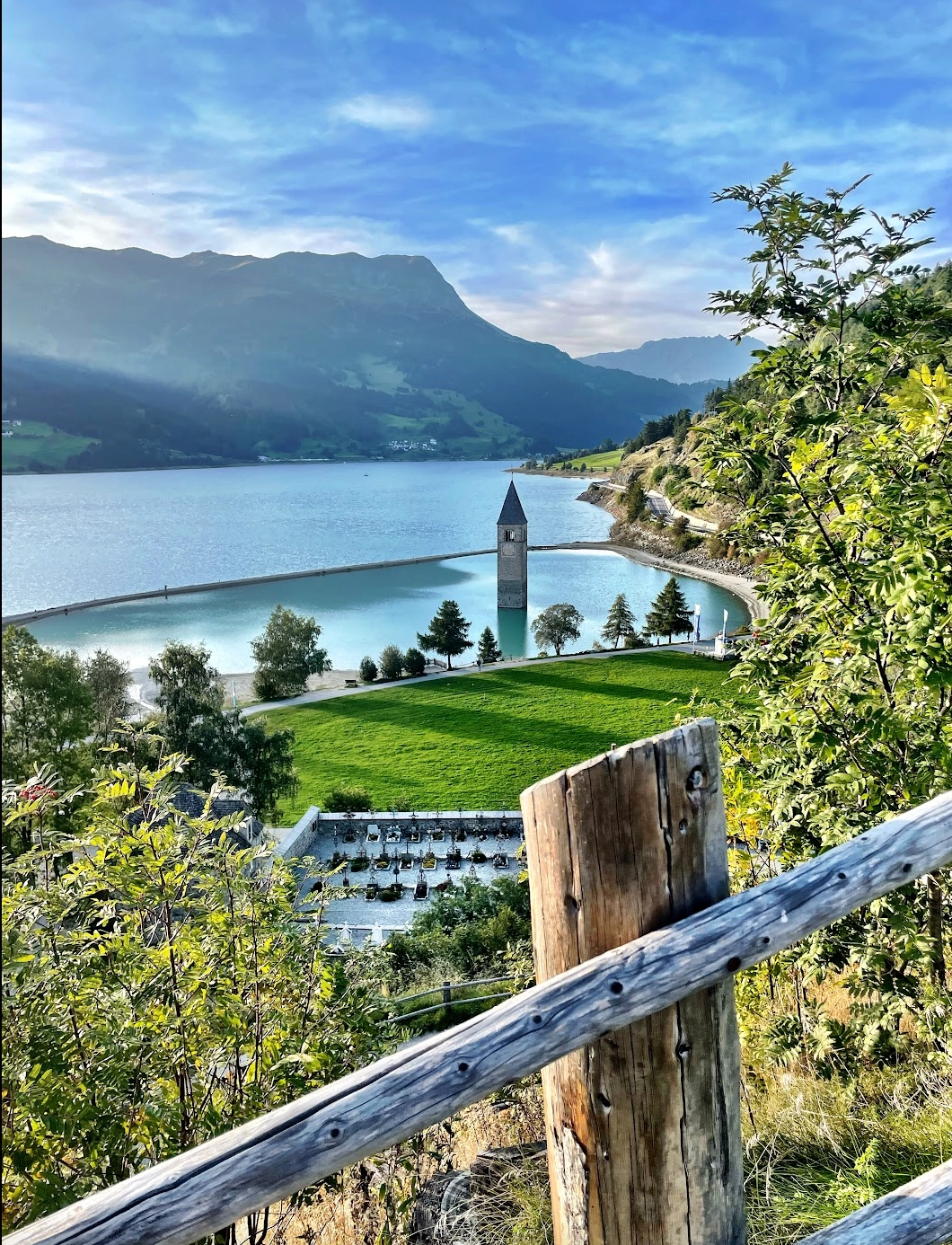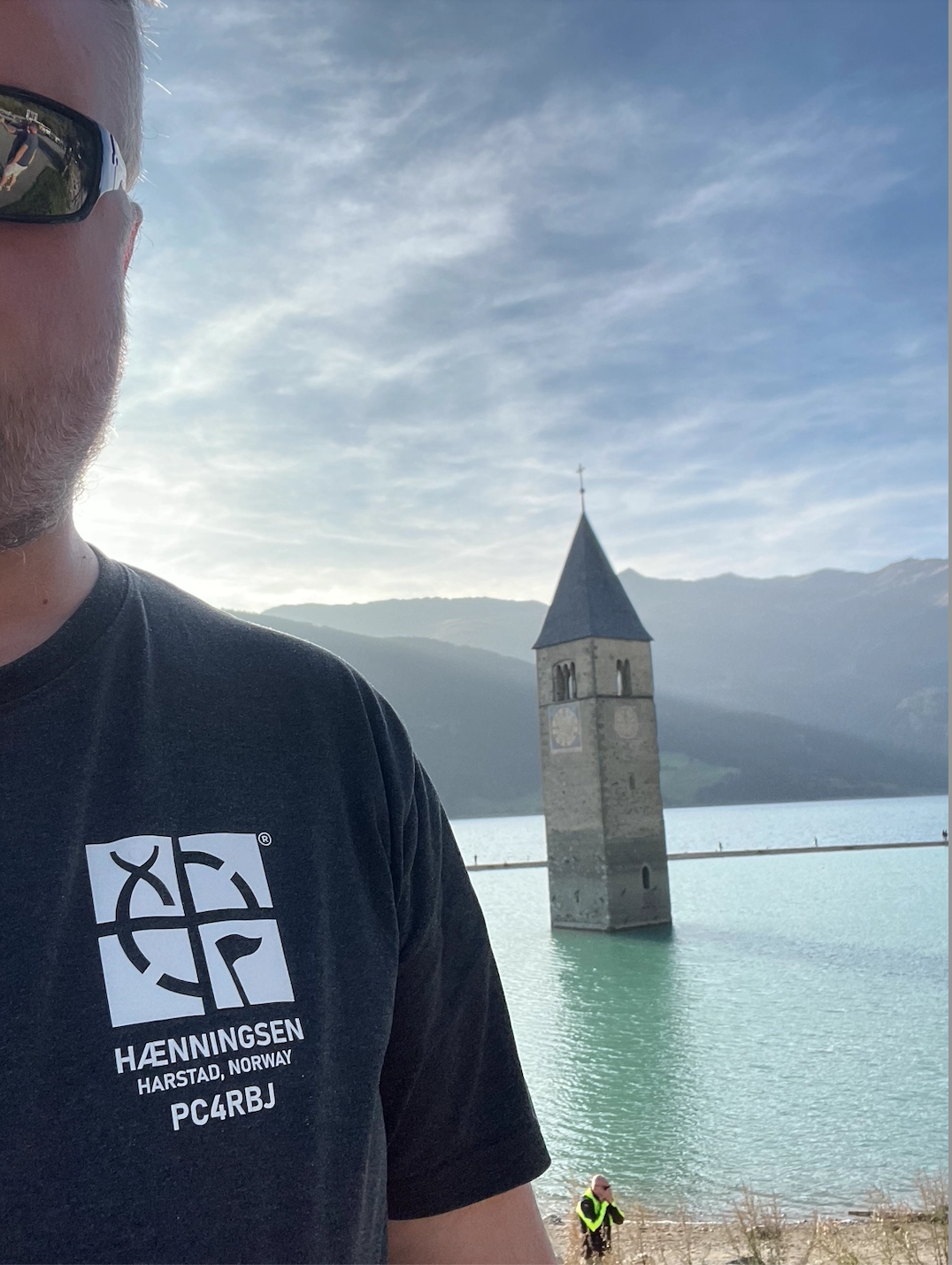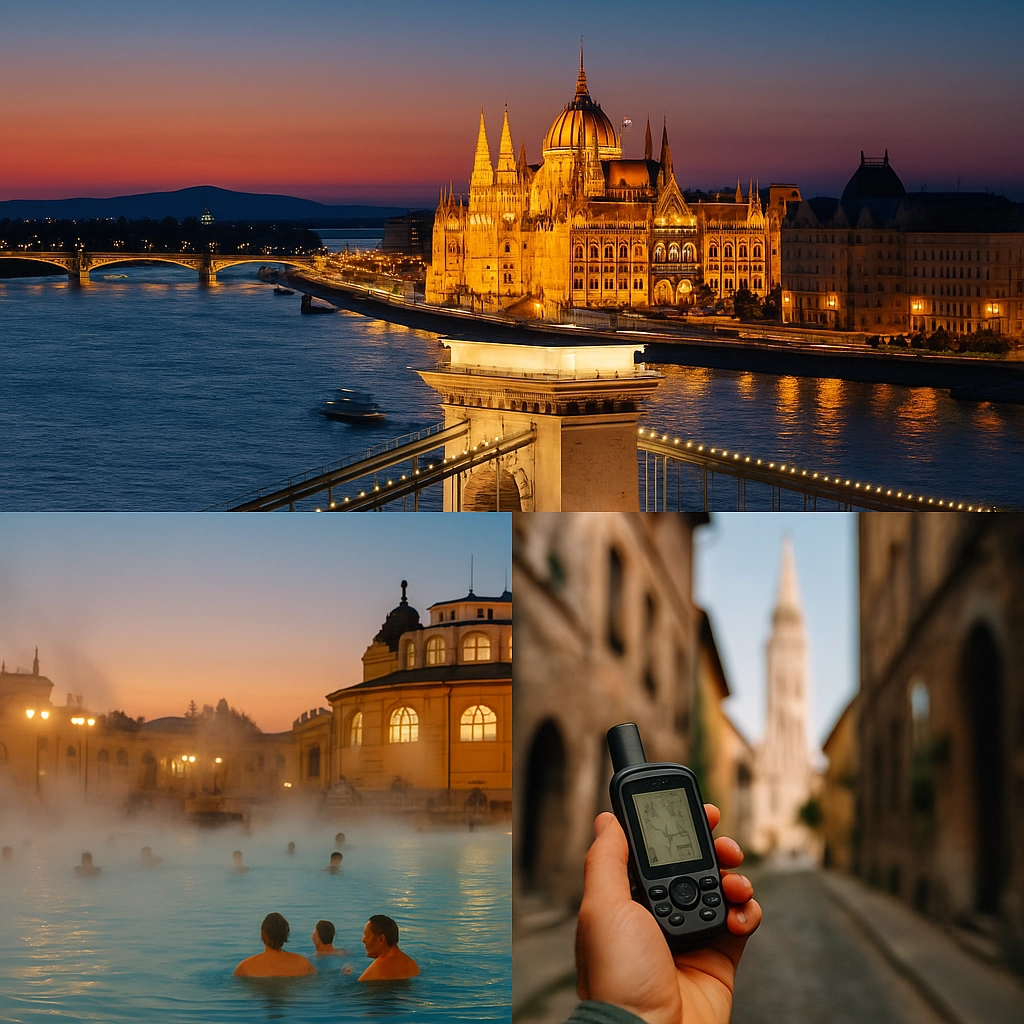In the heart of the dramatic Alps, right on the border between Italy and Austria, lies Reschensee – an artificial lake with an unusual story and an even more unusual landmark: a solitary church tower rising from the water, marking the site of the old village of Graun, which was sacrificed for hydropower development after World War II.
I had wanted to visit this place for a long time, and in the fall of 2023, I finally got the chance. As always: Geocaching was a natural part of the trip.
🏘 The Story of Graun and the Submerged Tower
The name Graun (Latin: Curunes) was first documented in 1165–1166 in a Latin charter from the Counts of Tyrol. The name comes from the Rhaeto-Romanic word curuna, meaning "rounded rock hill." The original village lay closer to the valley floor.
In 1928, Graun became the administrative center of a new municipality, merging with the previously independent communities of Reschen, Langtaufers, and St. Valentin auf der Haide.
Graun was a small village in the Vinschgau region, home to around 150 families. Life revolved around farming, craftsmanship, and strong community bonds. The village was idyllically located, with the church tower as a natural gathering point.
Plans for an artificial lake date back to 1920, but after decades of resistance and delay, the project was revived post-WWII when Italy needed more electricity for reconstruction. Despite strong local opposition and international attention, construction of the dam began.
The Montecatini company carried out the flooding in 1950. Buildings were demolished during the summer, and on July 9, 1950, villagers left their homes in a solemn procession after the final Sunday mass. On July 24, the church was demolished, but the 14th-century bell tower was preserved.

Today, Reschensee covers the original village of Graun and parts of Reschen. The lake is now a popular tourist destination, but memories of the tragedy live on through stories, memorials, and geocaching.
Seeing the tower in person is a powerful experience. Beneath the water lie the remains of over 160 homes and farms. In winter, the lake freezes over and you can walk out to the tower. I visited in the fall, and just standing by the shore was enough to take it all in.
🎯 A Goal for the Journey
During a business trip to Italy in 2023, I managed to combine a Mega Event in Pitztal with a scenic loop through the Alps – driving through the Dolomites, across the Brenner Pass, stopping in Innsbruck, and heading south again toward Milan. One of the main goals of the trip was to visit the famous church tower in Reschensee.
The story of Graun intrigued me. Generating electricity often comes with great consequences, and here, it was especially visible. Finally standing at the water’s edge and seeing the tower with my own eyes was something I had looked forward to for a long time.
🗺 How to Get to Reschensee
I had just crossed the border from Austria into Italy after a lovely drive from the event in Pitztal. And suddenly, there it was: the lake. In the middle of the water stood the tower – a silent witness to what once was.
The parking area nearby was bustling – cars, campers, a tourist bus, and motorcycles in every direction. It’s clearly a popular stop for both tourists and passersby. Fortunately, I managed to squeeze into a small space – a lone parking spot just for me.
From there, it was just a short walk to the shoreline and the start of both the tower experience and the geocaching adventure.

🧭 Geocaching at Reschensee – Atlantis der Berge and St. Anna
As is often the case at evocative landmarks, someone placed a virtual geocache here – in this case, GC7B7QJ – Atlantis der Berge. It’s easy to log and provides a great opportunity to reflect on the history and atmosphere of this iconic site.
There’s also an Adventure Lab cache in the area, offering a pleasant walking tour around the tower and along the lakeshore. It’s a peaceful, informative loop – perfect for combining sightseeing with geocaching.
I also recommend a short detour up to St. Anna Chapel. There you’ll find a traditional cache (GC60KDH) that’s easy to locate – and the view over Reschensee and the valley is spectacular.
📌 Tips for Visiting Reschensee and Graun
It’s worth the stop – plan at least an hour, if not more.
Plenty of parking near the tower. Payment can be made via EasyPark, among other options.
Let the history sink in. Read the informational signs – they offer helpful context.
Bring a camera. The view is both dramatic and beautiful.
🗺 Summary
Reschensee was more than just a beautiful photo spot – it was a powerful encounter with history, nature, and geocaching. Standing by the water and seeing the church tower rise from the lake was a poignant reminder of what once was – and what was lost.
It was fascinating to see how the site preserves and tells Graun’s story while also offering modern experiences through geocaching, signage, and scenic walks.
With easy access, good parking, and well-designed caches – including a virtual and a great Lab tour – this is a stop I highly recommend for anyone interested in history or geocaching their way through the Alps.
Reschensee delivered on all levels: a personal goal, a historical encounter, and a peaceful moment of reflection with a view.





Comments